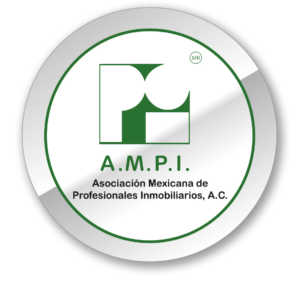Menu
Featured Properties
Casa Maria Bonita
- Beds: 5
- Baths: 5
- Half Bathroom: 1
- Residential
Casa La Condesa
- Beds: 3
- Baths: 4
- Half Bathroom: 1
- Residential
Casa Jardin
- Beds: 5
- Baths: 5
- Residential
Meet the team
Agave Real Estate: Your Trusted Real Estate Team in San Miguel de Allende. With local expertise and a commitment to personalized service, we help you find your dream home or investment property in this charming Mexican destination.
Discover the beauty of San Miguel de Allende with Agave San Miguel.
San Miguel de Allende Real Estate | Client Testimonials
Ben and Cheryl Young
Read More
When Ben & I decided to part with our home in San Miguel, we were delighted to secure the services of Wesley Gleason, a seasoned real estate professional who has in-depth knowledge of the high end market. Attentive and responsive, he and his team put together an excellent marketing program and held our hands through the entire process start to finish! Five Stars!
Jan Baumgartner
Read More
Absolutely the best; second to none. Attention to detail, integrity, trustworthiness, and perhaps best of all, Wesley listens. He hears you - what you want, are looking for, what your dreams may be in a new home. He will never try to sell you something that he truly doesn't believe is a good fit; in your best interests. I've bought and sold a few times now with Wesley and would use no other realtor in San Miguel. Thank you Wesley and team.
Elizabeth Sargent
Read More
We were so fortunate get to work with Wesley and his extraordinary team at Agave. In truth, it was not any work at all for us -- just fun and success !!! I found Wesley when I message three realtors in San Miguel and Wesley responded right away -- the others, did not. He put together a gorgeous and varied collection of homes for me to see and then again 6 weeks later when i brought my husband back. We are full time real estate investors and we asked a lot of Wesley and he always exceeded every expectation. Here's the thing -- Wesley, is truly a good person. He's not in it to sell you something, but rather to help you find the home of your dreams !!! And no worries about buying in a foreign country -- his incredible team in the office is there to hold your hand through every step !! We miss San Miguel when we are not there and we miss Wesley as well !!
Gerry Troy and Stephen Solomons
Read More
This year, 2023, we have worked with Turquesa on both the sale of one home and the purchase of a new one. We cannot praise her enough. She is knowledgeable, empathetic, efficient, responsive, unfailingly cheerful, and most importantly, professional. Working with her on both transactions was pleasure. We have never had a more painless real estate experience.
Frances & Raymond
Read More
"My wife and I long thought about getting our own place in San Miguel. We are experienced in buying real estate but Mexico, a wholly different undertaking. The first few agents confirmed our trepidation. Ultimately, we were fortunate to meet Turquesa. Her knowledge and experience were far and above anyone we had met to that point. She was exactly what we needed, a combination of expertise and genuine caring about the client. She pointed out issues and asked questions of sellers that we would never have thought to ask. Our confidence grew to the point of closing on a property that we are very pleased with. She has been there for us long after the sale , and we consider her our go -to person for anything we need in San Miguel.”
Previous
Next
What clients are saying about Agave Real Estate
GoodBased on 20 reviews
 Caroline Coulton2023-04-25We spent a month in San Miguel and rented a beautiful home through Jim at Agave. Both Jim, and his staff, did a wonderful job of assisting us along the way. Their responses were prompt and helpful. We can’t wait to go back!
Caroline Coulton2023-04-25We spent a month in San Miguel and rented a beautiful home through Jim at Agave. Both Jim, and his staff, did a wonderful job of assisting us along the way. Their responses were prompt and helpful. We can’t wait to go back! Sara Teague2023-04-12We have used Agave Real Estate for all our rentals in San Miguel for many years. Jim Castro is always responsive to our requests for different size houses for monthly rentals. Ipanema and Lucia are both great people in the office to help us with everything. Many of our friends have rented houses through them too, with no complaints. We would certainly recommend Agave Real Estate to anyone who plans to rent in San Miguel.
Sara Teague2023-04-12We have used Agave Real Estate for all our rentals in San Miguel for many years. Jim Castro is always responsive to our requests for different size houses for monthly rentals. Ipanema and Lucia are both great people in the office to help us with everything. Many of our friends have rented houses through them too, with no complaints. We would certainly recommend Agave Real Estate to anyone who plans to rent in San Miguel. peter howe2023-04-11My wife and I have used the services of Agave Real Estate - Rentals since 2019. Jim Castro and his team have always been professional, responsive and fair. We have recommended Jim to several friends who have also used their services with good results. Well done Jim and team!!
peter howe2023-04-11My wife and I have used the services of Agave Real Estate - Rentals since 2019. Jim Castro and his team have always been professional, responsive and fair. We have recommended Jim to several friends who have also used their services with good results. Well done Jim and team!! Anita Forsman2023-04-10I just moved out of a lovely apartment that I found and rented through Agave. Lucia, Ipanema & Jim were terrific. They were very professional and responsive to any requests I had and smoothly facilitated my move out a month early. What a great team! I definitely recommend them for any upcoming long or short-term rental needs you might have!
Anita Forsman2023-04-10I just moved out of a lovely apartment that I found and rented through Agave. Lucia, Ipanema & Jim were terrific. They were very professional and responsive to any requests I had and smoothly facilitated my move out a month early. What a great team! I definitely recommend them for any upcoming long or short-term rental needs you might have! jonna stratton2023-04-10Feed the Hungry rented Casa San Jose through Agave Rentals for a week long fundraising event. All of the guests loved the house and were really impressed with the attentiveness of the staff . The accommodations of each room were superior and our 11 guests were extremely happy there. Thanks to Jorge, the on site property manager, any and all requests were immediately addressed, We look forward to the next opportunity to stay at Casa San Jose
jonna stratton2023-04-10Feed the Hungry rented Casa San Jose through Agave Rentals for a week long fundraising event. All of the guests loved the house and were really impressed with the attentiveness of the staff . The accommodations of each room were superior and our 11 guests were extremely happy there. Thanks to Jorge, the on site property manager, any and all requests were immediately addressed, We look forward to the next opportunity to stay at Casa San Jose Lucia Lopez2022-04-10Best properties in town, for rent and sale!!!!
Lucia Lopez2022-04-10Best properties in town, for rent and sale!!!! David Soto2022-03-01Sin duda la mejor inmobiliaria en San Miguel de Allende, el equipo de Jim & Wesley siempre estuvo al pendiente en todo el proceso. Sin duda si están buscando comprar o rentar en San Miguel de allende. Agave es la inmobiliaria a la que deben ir.
David Soto2022-03-01Sin duda la mejor inmobiliaria en San Miguel de Allende, el equipo de Jim & Wesley siempre estuvo al pendiente en todo el proceso. Sin duda si están buscando comprar o rentar en San Miguel de allende. Agave es la inmobiliaria a la que deben ir.



















